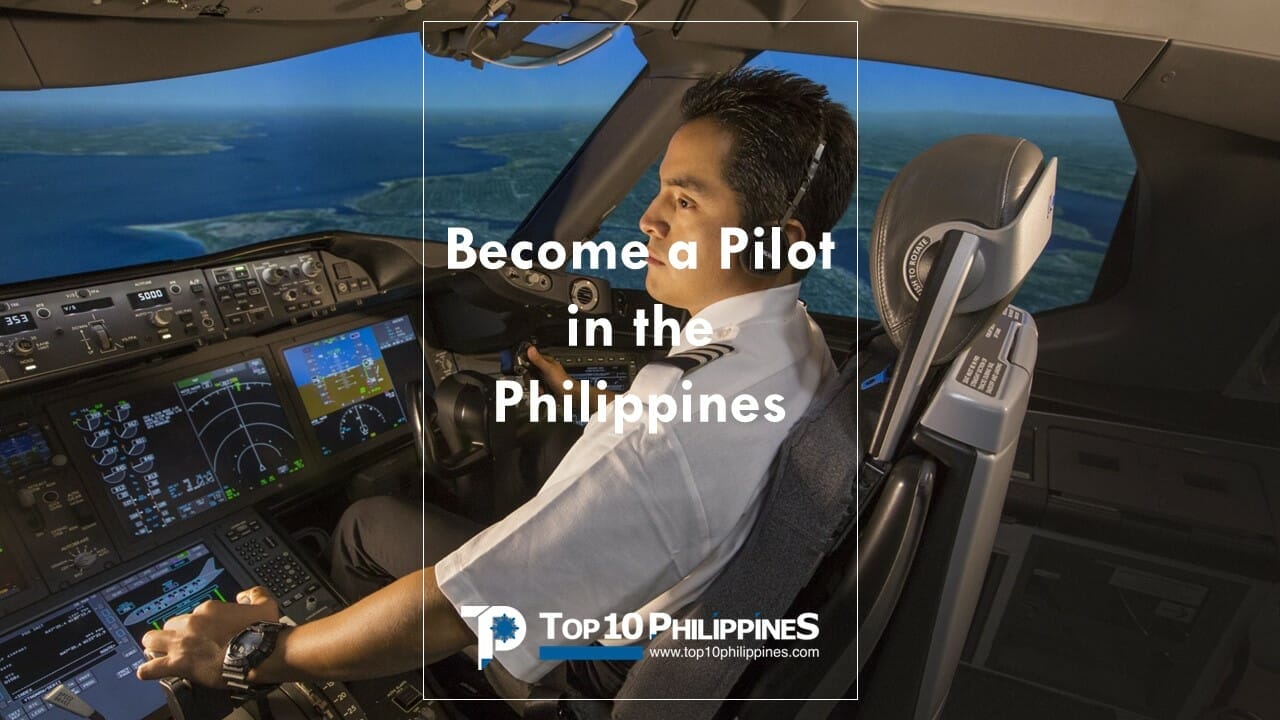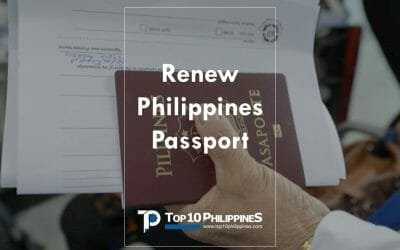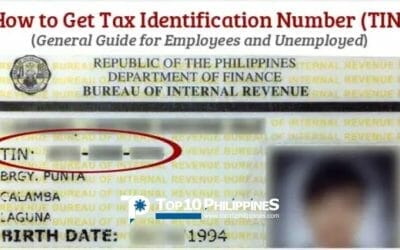Table of Contents
In the Philippines, becoming a pilot is not as difficult as one might think. With the right training and resources, anyone can become a pilot in the Philippines. This step-by-step guide will show you how to become a pilot in the Philippines, from choosing the right school to getting your license.
What is a pilot?
A pilot is an individual who is responsible for the operation of an aircraft. They are in charge of the takeoff and landing, as well as the navigation of the plane. Pilots must have a great deal of knowledge and experience in order to safely operate an aircraft.
Pilots are among the most important people in the aviation industry. They are responsible for flying airplanes and helicopters and ensuring the safety of their passengers. Becoming a pilot in the Philippines is not as difficult as one might think. There are many schools that offer training, and the requirements are not as stringent as in other countries. However, it is still important to undergo proper training before becoming a licensed pilot.
Pilots play a vital role in the transportation industry. They are responsible for getting people and goods from one place to another safely and efficiently. With the increasing demand for air travel, pilots will continue to be in high demand all over the world.
What are the duties and responsibilities of a pilot?
Pilots are responsible for the safety of the passengers and crew onboard an aircraft. They must have a thorough understanding of the aircraft they are flying, as well as its systems and capabilities. In addition to flying the aircraft, pilots also monitor the weather conditions and flight instruments and communicate with air traffic control.
A pilot is responsible for the lives of their passengers as well as the safe operation of the aircraft. They must have a strong understanding of both aviation regulations and the aircraft they are flying. Pilots must be able to take control of the aircraft in emergency situations and make quick decisions that could mean the difference between life and death. They must also be able to effectively communicate with air traffic control and their co-pilot. Becoming a pilot in the Philippines requires completing an accredited training program and passing both written and practical exams. Once licensed, pilots must complete periodic training to maintain their skills and knowledge.
The different types of pilot licenses
A pilot license is required to operate an aircraft. In the Philippines, there are different types of pilot licenses that allow you to fly different types of aircraft. The type of license you need depends on the type of aircraft you want to fly.
Student pilot license
The first type of pilot license is a student pilot license. This allows you to fly under the supervision of a certified flight instructor. You will need this license if you want to become a private pilot or a commercial pilot.
Private pilot license
The second type of pilot license is a private pilot license. This allows you to fly for your own personal use. You can also fly with passengers, but you cannot fly for commercial purposes.
Commercial pilot license
The third type of pilot license is a commercial pilot license. This allows you to fly for hire or reward. You can also fly passengers and cargo for commercial purposes.
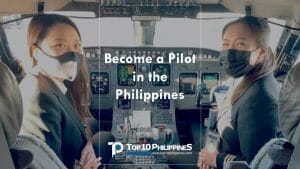
The benefits of being a pilot
Becoming a pilot has many benefits that can be enjoyed. For one, pilots get to travel to different places. They also get to see the world from a different perspective – literally. Pilots also enjoy good pay and job security. And finally, pilots get to help people in need, whether it’s by flying them to safety or providing them with transportation during an emergency.
If you love to travel and want a high-paying, exciting career, becoming a pilot might be the perfect choice for you. Here are just a few of the benefits that come with being a pilot:
Traveling to different places
If you have ever dreamed of becoming a pilot, the Philippines is the perfect place to make that dream a reality. There are many benefits to becoming a pilot in the Philippines, including the opportunity to travel to different places.
One of the best things about being a pilot in the Philippines is the opportunity to travel to different parts of the country and around the world. You will be able to see some of the most beautiful places in the world and experience different cultures. Pilots in the Philippines also have the opportunity to fly to other countries in Asia and even around the world.
If you become a pilot, you’ll get to travel the world and see some amazing places.
Meeting different people and cultures
Another great benefit of being a pilot in the Philippines is that you will be able to meet new people from all over the world. You will get to know other pilots and learn about their cultures and backgrounds. This can be a great way to make new friends and expand your horizons.
The freedom of flying
There are many benefits to becoming a pilot in the Philippines. The first is the freedom of flying. As a pilot, you will be able to fly anywhere in the world you want to go. You will also have the opportunity to fly different types of aircraft, including helicopters and private planes. Another benefit of being a pilot is the ability to work flexibly. Pilots can often choose their own hours and days off, which means they can spend more time with family and friends.
Hotel stays
In addition, pilots typically earn a good salary and enjoy other perks, such as free travel and hotel stays. If you’re looking for an exciting and rewarding career, becoming a pilot is a great option. There are many schools in the Philippines that offer training programs for aspiring pilots.
The view from the cockpit
There are many benefits to becoming a pilot in the Philippines. The first benefit is the amazing views. When you are up in the cockpit, you have a front row seat to some of the most beautiful scenery in the world. The second benefit is the sense of freedom and adventure that comes with being a pilot. You get to travel to different places and see new things.
Job satisfaction
A recent survey of pilots found that 91% were satisfied with their job. That’s much higher than the percentage of people who are satisfied with their jobs in other industries.
Good pay and benefits
Pilots in the Philippines enjoy many benefits, both financial and otherwise. First and foremost, they earn a good salary.
In addition to their base pay, pilots also receive allowances for things like housing and transportation. They also enjoy great job security and an excellent benefits package.
Finally, pilots get to experience the excitement of flying on a regular basis.
The downside of being a pilot
Pilots are responsible for the lives of their passengers and must therefore maintain a high level of training and focus. The downside of being a pilot is that the job can be extremely stressful, and pilots often work long hours. Pilots also have to deal with the risk of crashes and other emergencies.
Pilots are in charge of multi-million dollar aircraft and the lives of the passengers onboard. But what many people don’t realize is that being a pilot comes with a lot of responsibility and stress. The average pilot works between 60 and 80 hours per week, often spending days away from home. And when they are home, they are usually on call, which means they have to be ready to fly at a moment’s notice.
Pilots also have to deal with the constant threat of danger. Every time they take off, they are putting their lives at risk. And even though modern aircraft are very safe, accidents do happen. So while being a pilot may seem glamorous, it is important to remember that it is also a very demanding and dangerous job.
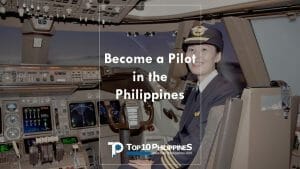
How to become a pilot in the Philippines
Dreaming of becoming a pilot, but you have no clue how to get started? Well, we’re glad you’re here! This section of the article will give you an ultimate guide on how to become a pilot in the Philippines.
So, continue reading!
1. Learn about the qualifications you need to become a pilot
The first thing you have to know is the basic qualifications that a pilot aspirant should meet.
a. Age to become a pilot in the Philippines
Everyone who wants to pursue a career as a pilot or to simply learn how to fly a plane should first obtain a student’s pilot license, which is only issued to those who are at least 16 years of age.
Those who are in their senior years are also welcome to learn how to become a pilot. However, making it their full-time career might not be a practical idea, as airline pilots normally retire at 67 years old.
B. Educational attainment to become a pilot in the Philippines
To become a pilot, it’s not necessary that one has to complete a college degree. Those with high school diplomas are already eligible to become a student pilot, a commercial pilot, and a private pilot.
But if you’re planning to apply for a major airline, a college degree is one of the fundamental requirements. It can either be related to the job or not.
c. Physical fitness to become a pilot in the Philippines
Being physically fit is arguably a must if you want to become a pilot in the Philippines. Since your job involves getting hundreds of people from one place to another safe and sound, you can’t afford to faint or have an asthma attack in the middle of the flight.
To make sure that you’re physically/mentally fit to become a pilot, you will be required to secure a medical certificate prior to starting your training.
d. English Proficiency
English is the language of international aviation, so prospective pilots are trained to speak it when communicating via aircraft radio. It is recommended that you have at least a level 4 English standard before you obtain a pilot license.
e. Height
While there’s no height requirement mentioned in the Philippine Civil Aviation Regulations, many airline companies made one as they want to ensure that the pilot can reach the controls in the cockpit. Philippine Airlines requires its pilots to be at least 5’4″ tall.
2. Choose which training stage you want to undergo
There are five different stages of pilot training that students need to finish depending on what type of pilot they want to become.
a. Student Pilot License
The license is given to novices who are still in the earliest stages of pilot training.
b. Private Pilot License
Once you earn this license, you will be allowed to fly solo, with passengers, or with cargo.
c. Commercial Pilot License
This license lets you fly a plane as a paid professional pilot.
d. Airline Transport Pilot License
Considered the highest level of Aircraft Pilot Certificate, this license allows you to fly passenger airlines.
3. Choose a flight school
Picking which flight school you will enroll in is also a part of the process of how to become a pilot in the Philippines. This step comes after you decide on what type of license you would like to obtain. In the country, there are over 10 pilot schools to choose from. Your flight training cost will then depend on the school you choose and other factors.
Costs: How much is the tuition fee of an aviation school in the Philippines?
Philippine State College of Aeronautics (PhilSCA) offers a free tuition fee for Filipino students who are dreaming of becoming a pilot. Because PhilSCA is a state institution (public school), it is covered by RA 10931, and all of its courses and programs are free. This includes BSAT, and all associated costs—including flight training, which is a required component of the program—will be waived.
The average tuition fee for private aviation schools in the Philippines to become a pilot is PHP 48,955, plus other miscellaneous fees.
Which aeronautical school is the best in the Philippines?
According to our sister media company GineersNow, the best school is PhilSCA. Visit GineersNow’s Top 10 aeronautical engineering schools in the Philippines and check out their facilities, tuition fees, curriculum, and faculty.
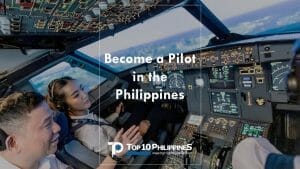
What are the career paths and career opportunities of pilots?
In the Philippines, there are many opportunities for pilots. The most common career path is to become a commercial airline pilot. There are also opportunities to become a private pilot, or to fly for the government or military.
To become a commercial airline pilot, you will need to have a high school diploma or equivalent. You will also need to pass a physical examination and have a valid passport. Once you have these things, you can apply to an airline academy.
The training to become a commercial airline pilot takes about two years. During this time, you will learn how to fly an airplane and how to navigate. You will also learn about safety procedures and emergency procedures. After you finish your training, you will take a final exam that includes both written and practical components.
Once you have passed your exam, you will be issued a license that allows you to fly commercially.

Conclusion: How to become a pilot in the Philippines
In conclusion, becoming a pilot in the Philippines takes time, effort, and money. However, it is a rewarding career that offers many opportunities for travel and adventure. If you are interested in becoming a pilot, research the requirements and start working towards your goal.
Conclusion

